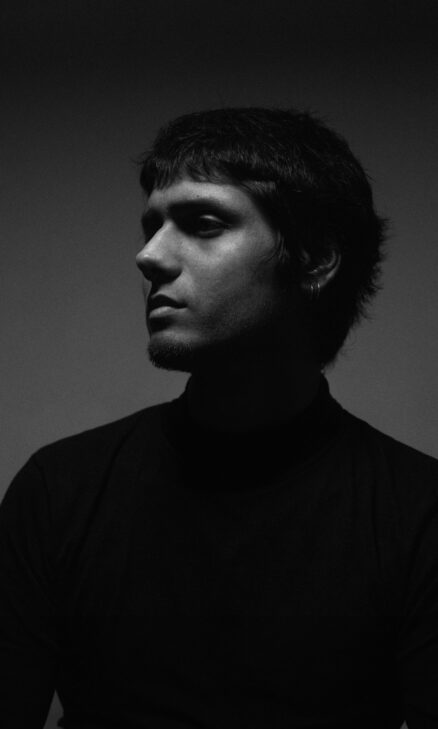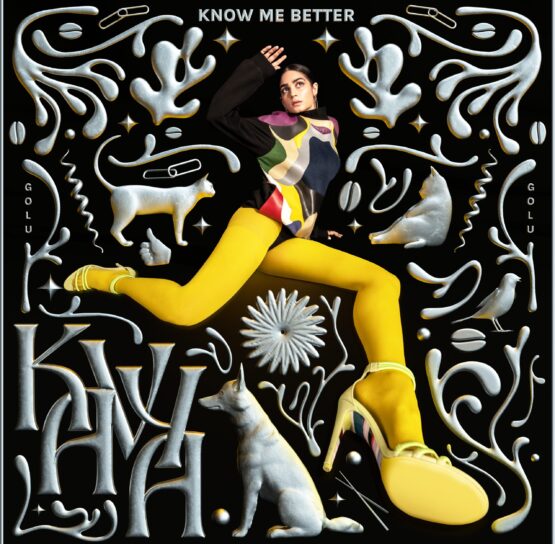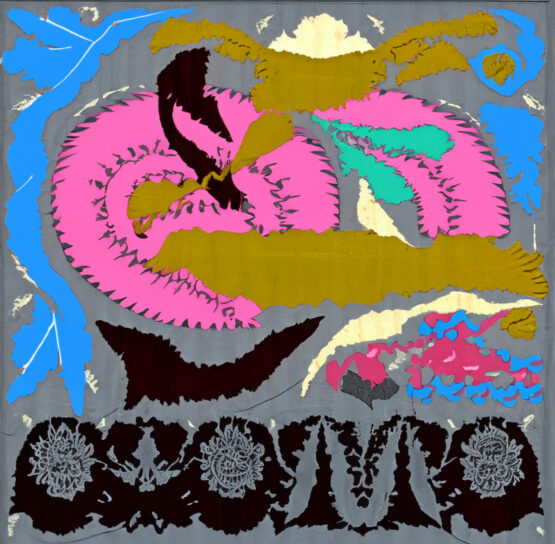Sanchit Sawaria
A ‘design generalist’ who is redefining visual storytelling with every form of creative communication.
The works of art director and graphic designer Sanchit Sawaria offer a visual experience where form takes center stage, and the interaction between various elements such as textures and colors adds layers of character to his artworks—whether it is the branding of an organization or creating editorial illustrations for a book review. Primarily renowned for type design, Sanchit has expanded his skills into 3D art, motion graphics, illustration, and more—embracing the role of a 'design generalist’, a title that has come to encapsulate the identity of Sanchit Sawaria as an artist. This versatile approach also remains one of the key factors that has propelled Sanchit to the forefront as one of India's most boundary-pushing artists today. In his works while varied elements come together, they favor simplicity over complexity and result in a clean and impactful aesthetic. A graphic design graduate from NID, Sanchit’s career began to ascend with his work on Akhand Devanagari. While still a student, he conceptualised a family of eight compact mono-linear typefaces in a series of fonts that aimed to provide Indian design with its own voice. Sanchit’s approach to type design — traditionally viewed as rigid— has evolved into a dynamic form of visual storytelling. He takes conventional letterforms and adds a fluid, expressive quality into typography. Similarly, all his designs—whether 3D rendered artworks or illustrations—evoke a deeper meaning and sense of introspection for the viewers to mingle with. Most of them have also borrowed inspiration from cultural contexts, including Satyajit Ray’s influence on Sumit Roy’s album Herock. A winner of the esteemed Ascenders competition hosted by the Type Directors Club (TDC), Sanchit’s ability to move effortlessly across multiple disciplines to impart a unique depth into each of his projects — a characteristic that has peppered his portfolio with names such as Apple, &Walsh and his current role at Google Creative Lab.



Sanchit speaks to Blur The Border :
Blur : Is there a meaning behind your Instagram handle @badjudgeofcharacter?
Sanchit : It’s natural for people to create biases and expectations about others. I fell into that pattern a lot and was often surprised by how different people actually turned out to be. @badjudgeofcharacter is a reminder to myself to avoid those biases and interact with people without any assumptions.
Blur : Do you have a signature style in your works and in your opinion, should artists have a signature style through which they are recognised?
Sanchit : I don’t think I have a signature style. At least I try not to have one since I work with so many mediums, but my peers have said that I do. My art is personal so I try not to create a brand or a style around it that is recognizable. I don’t think it’s necessary to have a style but artists who do have one have a stronger identity.
Blur : As an artist with cross-disciplinary roles across graphic design, visual art, and art direction, what is the common thread that ties all these disciplines together in your works?
Sanchit :While these disciplines flex different muscles, foundational principles like color theory, typography, layout, composition, visual intuition and your unique approach to design remain constant throughout any kind of creative work.
Blur : And as a design generalist, what would you say are the perks of exploring multiple design disciplines? Any other style you are looking to explore?
Sanchit : I'm always curious about new media and often use tools in a way they weren’t designed to be used in an attempt to break them. Being a generalist, what I learn in one discipline impacts my knowledge of others. I use type design principles in my layout and UI design work. My personal AI experiments impact the way I design experiences at the Google Creative Lab. Your acquired faculties find their way into other disciplines organically.
Blur : Do you have a definitive process while creating? Are there any habits or rituals that help you get into a creative mindset?
Sanchit : I I don’t have a set process as it varies with every project. In terms of habits, I often find myself daydreaming about the projects I'm working on. I ideate in great detail before going to bed, while taking a shower or when I'm in transit. When I finally have to work on the ideas, execution is easier as I've already explored and fleshed them out in my mind. I like to immerse myself and hyperfixate on topics related to my work. I let that information settle in and the ideas start to emerge on their own.
Blur : You have worked with prominent names such as Google, Apple, Walsh India, and more. How do you strike a balance between adapting to their design language and maintaining your own creative voice?
Sanchit : My creative voice is in the ideas I bring and not necessarily the style I work in.
Blur : How has your artistic style evolved over the years, and how do you view this evolution?
Sanchit : It hasn’t. For a style to evolve, there needs to have been a single style in the past and a single style in the present. My approach evolves as I collect more experiences with more projects. Now that I’m working with Generative Ai, I take a lot of what I’ve learnt to my personal projects and build on my previous experience of working in branding, typography and communication design.
Blur : Any artist, music artist or designer who you look up to or who has inspired your works?
Sanchit : I love the band Meshuggah who changed metal with guitar playing that doesn’t follow traditional pathways of the instrument. My work isn’t inspired by the band but I deeply connect with their philosophy of using tools or instruments in a way that supports the art and not the other way around.
Blur : If you were to collaborate with other artists, outside of your discipline, what is one collaboration you would love to do?
Sanchit : Hidetaka Miyazaki of From Software is my favourite game designer and a true mozart of the medium. Playing the studio’s games has been a spiritual experience for me personally. I would love to design worlds and game mechanics on a From Software game.
Blur : How can young Indian designers keep up with the evolving digital space? Are there any resources or methods that you would recommend?
Sanchit : Before we get into this, I think it’s important to distinguish between keeping up with the digital space just to be a part of it and genuine curiosity. I don’t personally seek out the latest updates or follow any blogs/feeds but I’m surrounded by people that work across tech, design and art. It is tough to be informed about everything in a space that changes overnight. My approach to keeping up is not necessarily about only staying informed but more about playing with new tech and exploring how I can find novel ways to create with it.